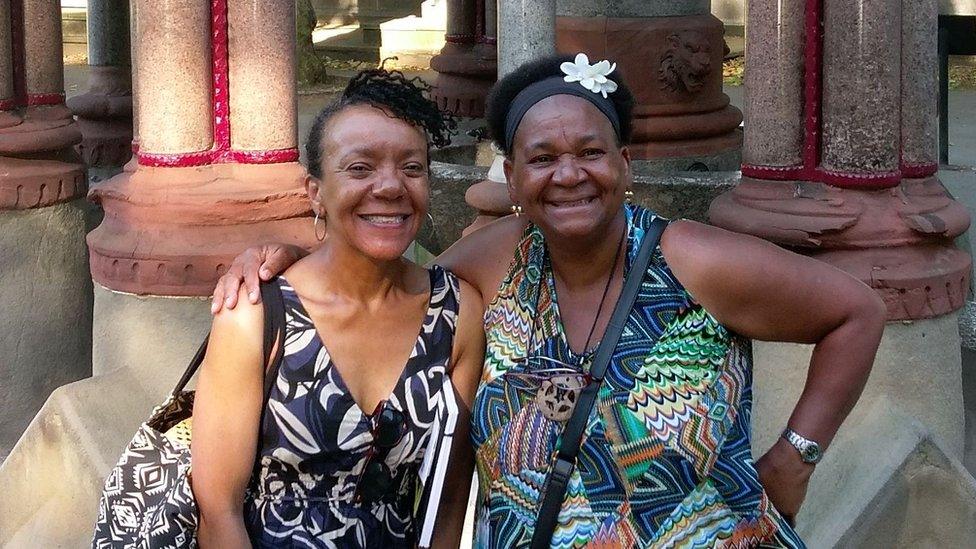Windrush Monument: Final designs for Waterloo revealed
- Published
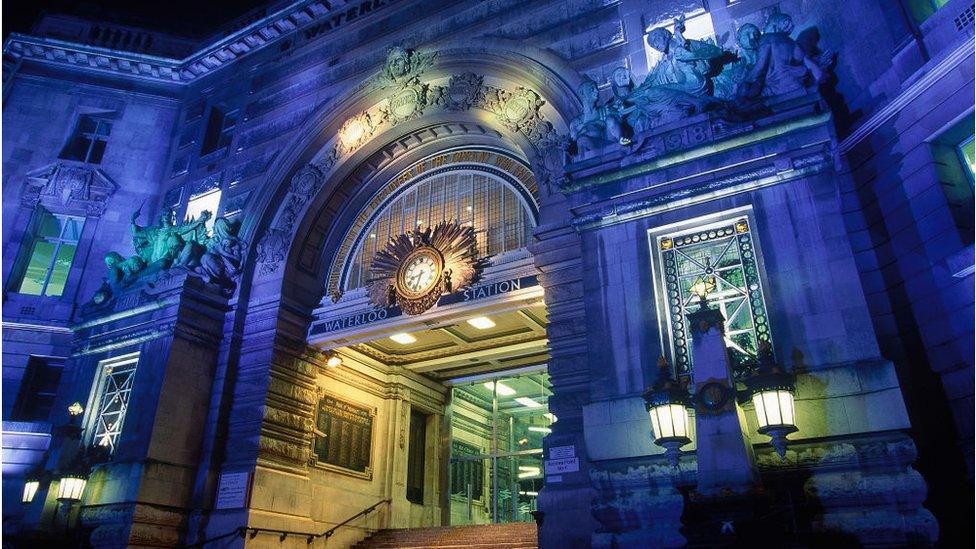
The monument will be installed at London Waterloo railway station
Designs for a permanent tribute to the Windrush generation have been narrowed down to the final four.
Concepts by Basil Watson, Jeannette Ehlers, Thomas J Price and Valda Jackson, all of Caribbean heritage, make up the shortlist.
The monument will be installed at London Waterloo railway station to honour how the Windrush generation has enriched Britain's history.
The artists have each made a video to explain their work.
Chairperson of the Windrush commemoration committee, Baroness Floella Benjamin, said the monument "will act as a symbolic link to our past, and a permanent reminder of our shared history and heritage for generations to come".
Members of the public are being asked via an online survey, external for their opinion on the designs, although the final choice rests with the committee.
"It will educate and inspire the next generation through the Windrush story. For that reason, it is incredibly important to myself, and the Windrush commemoration committee, to hear from young people on what they think of the four designs," said Baroness Benjamin.
"The monument will be a place that people can visit from far and wide with their children and families to learn and reflect on the lasting legacy of our Windrush generation."
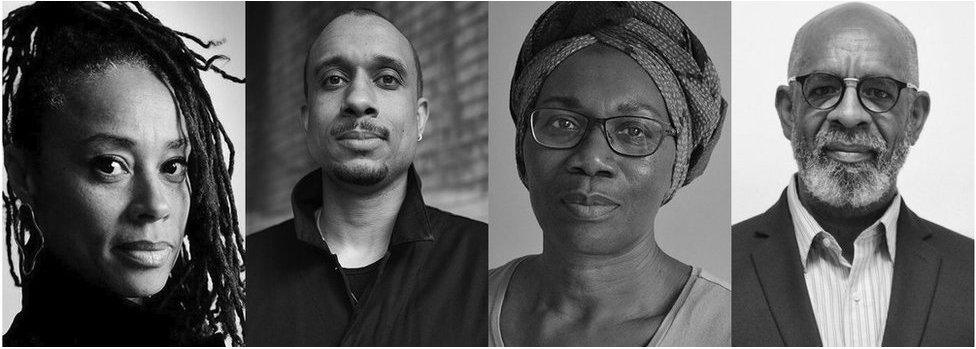
Jeannette Ehlers, Thomas J Price, Valda Jackson, Basil Watson
The shortlisted artworks:
Jeannette Ehlers' shortlisted work, external is inspired by the powerful mythical character of the Moko Jumbie, a spirit which walked across the Atlantic ocean, external from Africa to look after the enslaved people in the Caribbean.
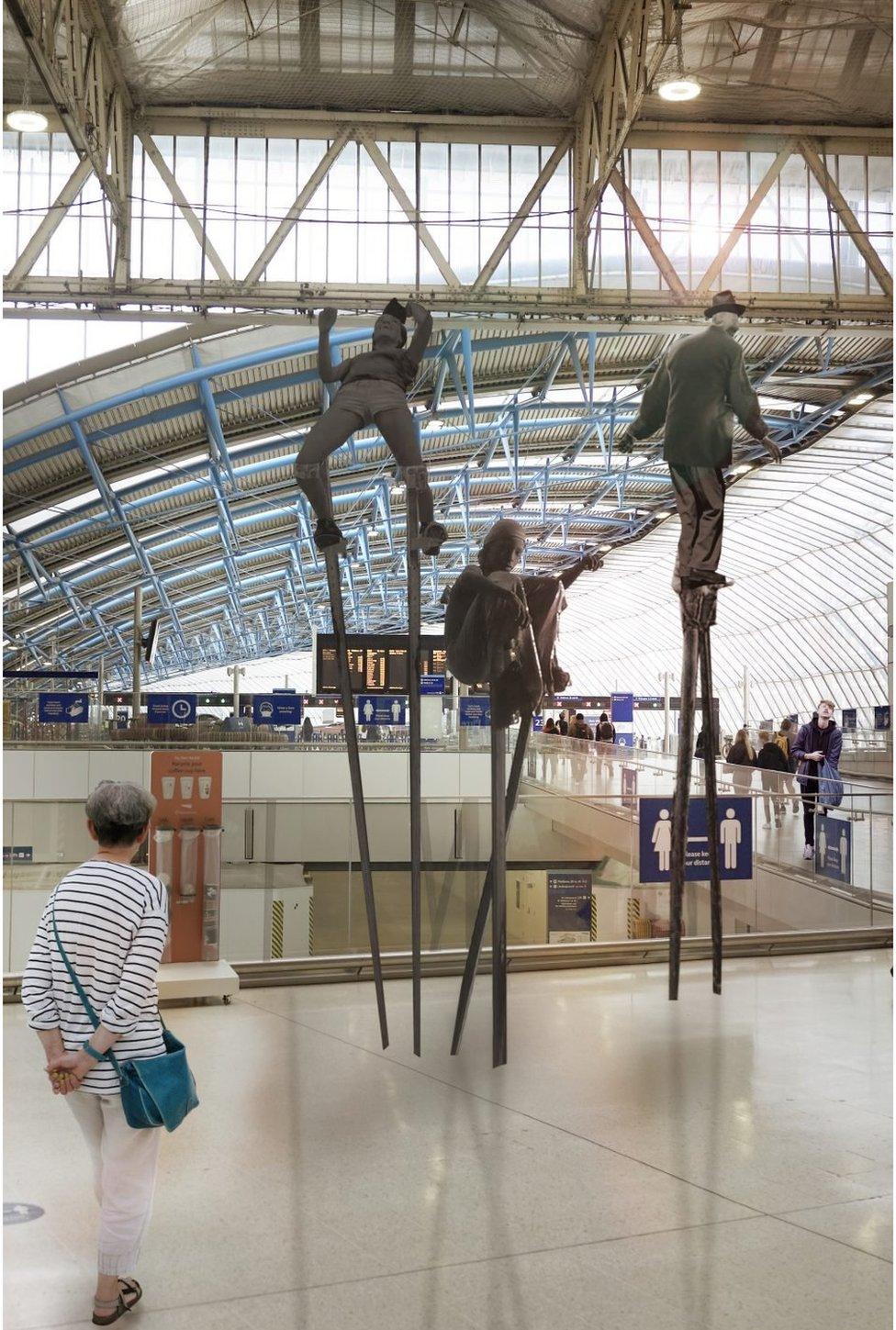
Jeanette Ehlers' group portrait, influenced by the Moko Jumbie
She uses a mixture of photography, video, installation, sculpture and performance in her work, which questions memory, race and colonialism. She is influenced by her Danish Trinidadian heritage and was the co-creator of a significant public memorial in Copenhagen to Mary Thomas [a 19th Century slavery freedom fighter].
Ehlers' Windrush piece would be created from digital body scans of British Caribbeans, which she would use to form a simple group portrait made from jesmonite, bronze and aluminium.
She said: "Working with hybridity and pan-Africanism I have long been interested in looking further into that crucial British Caribbean part of my heritage.
"It will be an honour and a thrilling challenge for me to get in touch with the British Caribbean Community."
The daughter of Windrush generation pioneers, Valda Jackson, external works in sculpture, painting, printmaking and moving image. Her work reflects and questions our past and present - with intent on influencing our future.
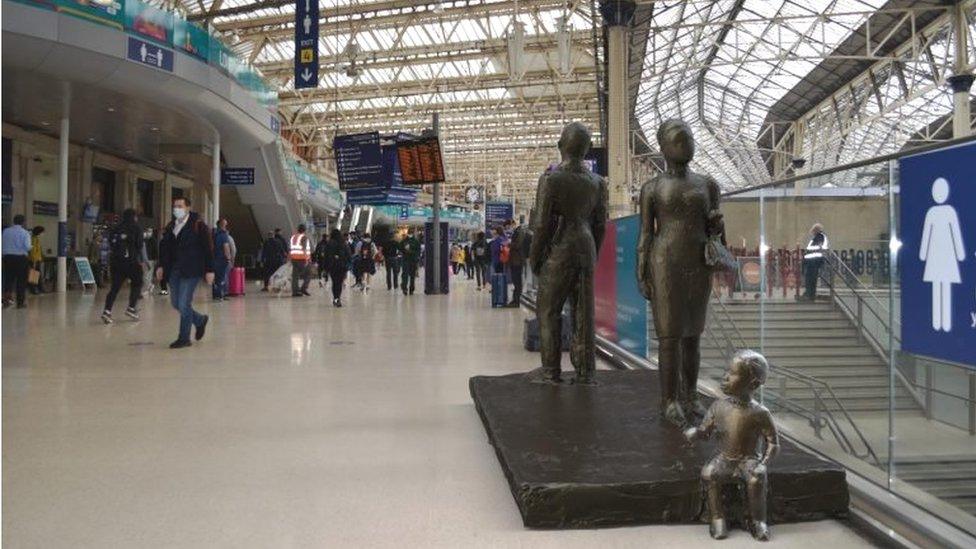
Valda Jackson's work represents the people who might feel least appreciated
Jamaican-born Jackson's bronze sculpture would feature three figures on a platform, external, including a small child. She said they represent the people who might feel least appreciated and most at risk of having to answer the question, 'why are you here?'
"As a daughter of the Windrush generation it is an honour to be considered to create a sculpture that celebrates the unique and profound contribution made by Caribbean and Commonwealth people to the life and culture of Britain.
"It is a space for all the stories to be imagined - those we know are true and those imagined. It is a space for everyone".

Who are the Windrush generation?
The Windrush generation has come to be defined as those people who emigrated from the Caribbean to Britain between 1948 and the Immigration Act 1971.
The name refers to the ship MV Empire Windrush, which docked in Tilbury on 22 June 1948, bringing workers from Jamaica, Trinidad and Tobago and other islands, to help fill post-war UK labour shortages.
The British Nationality Act 1948 cemented the rights of settlement to everyone born in a British colony; nearly half a million people took up the offer of nationality.
The Windrush scandal began to surface in 2017 after it emerged that hundreds of Commonwealth citizens had been wrongly detained, deported and denied legal rights.

Thomas J Price's design is of a single figure of a woman, external "in a reasonably casual pose". He said the large-scale sculpture - in bronze with a raw gold finish - is of the type we would normally see on plinths, but in this case the figure's size would be enough to convey the status and power of the woman.
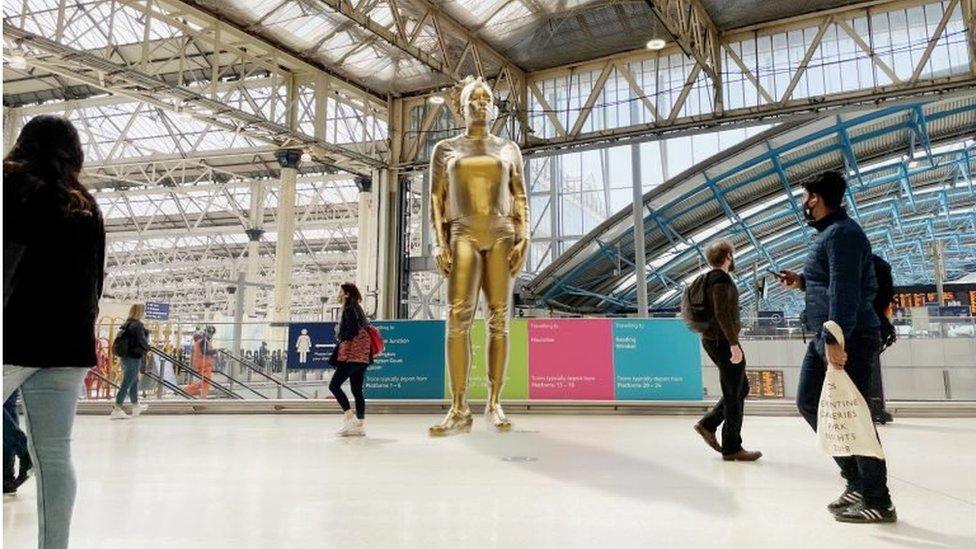
'We can recognise ourselves in her, we carry that same casual stance ourselves,' said Price
"We can recognise ourselves in her, we carry that same casual stance ourselves.
"Everyone worries about how they are seen, and they would see this woman being like us and being powerful and being celebrated.
"On a personal level, I grew up traveling via Waterloo station to visit family out of London on the weekends and so, as a location, it is strongly associated with a sense of 'home'".
The child of a Jamaican father and English mother, Price said his work addresses "the imbalance of representation within society". He says he is influenced by his personal history, the history of the UK and the history of monument.
Figurative sculptor Basil Watson uses figures of a man, woman and child, external representing the family, climbing a pile of suitcases, representing their culture.
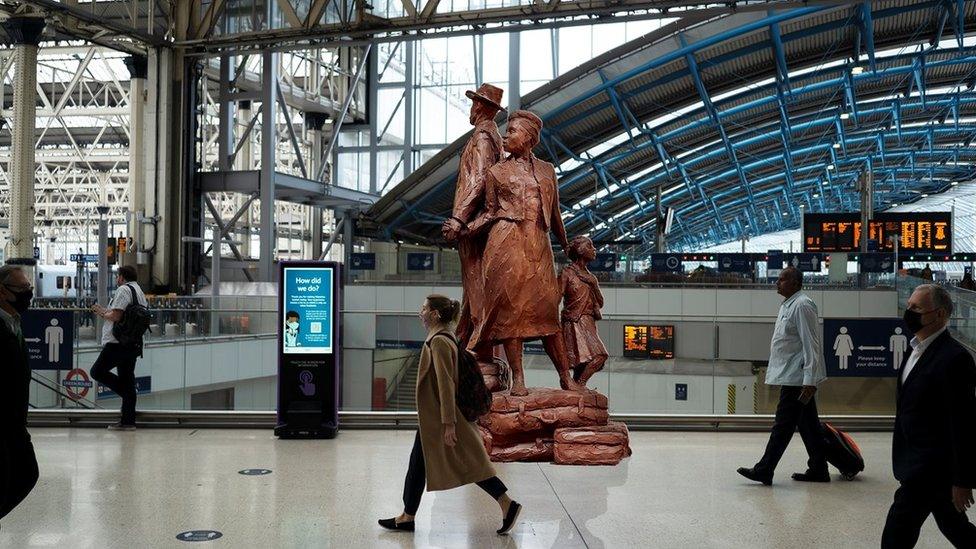
'The suitcase holds within it all things valuable,' Watson said
"The suitcase holds within it everything this family has in their possession from their place of origin - in this case the Caribbean. It holds within it all things valuable.
"It is exciting, and I feel privileged that I now have this opportunity to express the aspirations, vision and courage of my parents who took the long sea voyage to England in 1952 as part of that Windrush generation in search of a brighter future".
Watson has designed public sculptures and monuments across the world, including statues of Martin Luther King, Usain Bolt and Merlene Ottey.
The final design will be announced in October this year during Black History Month, with the monument being unveiled on Windrush Day 2022.
The public have until 25 August to share their thoughts on the artists' proposals and participate in an online survey.
Related topics
- Published22 June 2021
